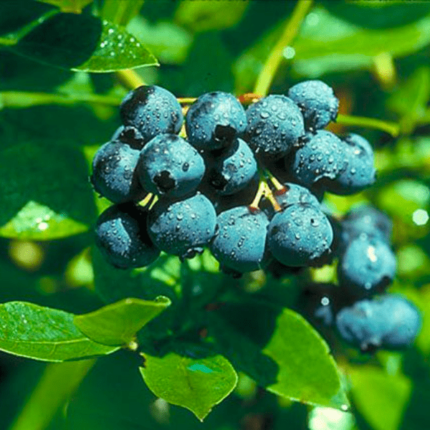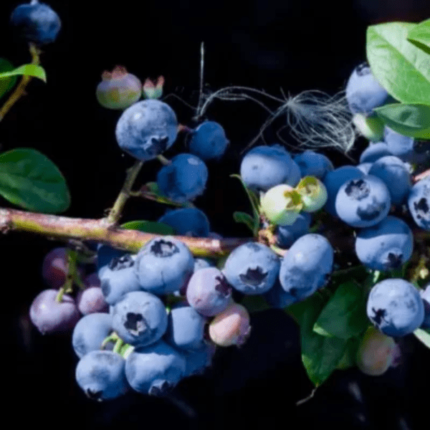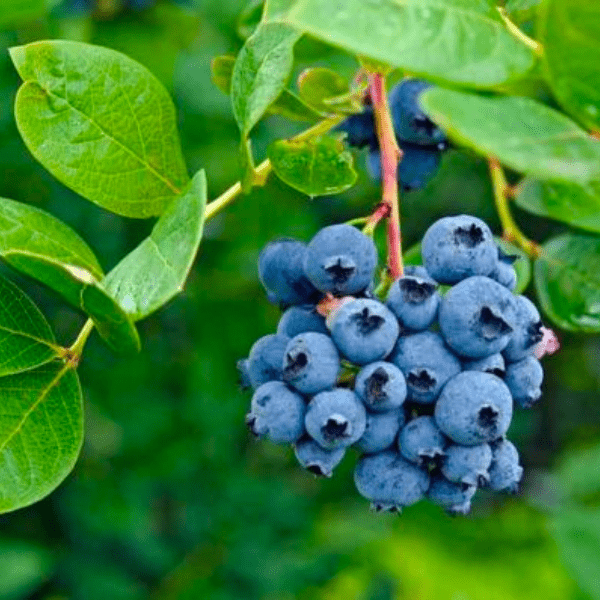Polaris
$13.00
You save
Details:
Compact, half-high habit (3’
Tall x 4’ wide). Earliest
Maturing Variety. Smaller
fruit with very Aromatic
Flavor
Out of stock
Described by the Oregon State University, there are five primary types of North American blueberry: northern highbush, southern highbush, rabbiteye, lowbush, and half-high. Polaris is a variety considered half high, meaning the blueberry descends from a cross between northern highbush which can reach as high as 9 feet tall and lowbush blueberries which typically stop at 1.5 feet in height. Half-high cultivars are typically known for their cold hardiness which can reach down to -35°F or even -45°F and their moderate size, making this plant ideal for both home and commercial cultivation.
- Self Pollinates
- Cross Pollinators – Top Hat, Pink Lemonade, Northland
- 3 – 4 Feet Tall & Wide
- Full Sun (At Least 6 Hours Of Direct Sunlight)
- Growing Zones 3 – 8
A blueberry plant that’s small, but mighty, the Polaris Blueberry brings the best of attributes together. This fruiting shrub begins with white flowers in May, and ends with red foliage in the Fall. Perhaps the best part, sweet medium sized blueberries are ready for harvest in late July and early August. This beautifully producing, compact blueberry bush is a great choice for a productive, and versatile and upright option in any landscape.
The Polaris Blueberry is hardy in zones 3 to 7. It can be planted any time of the year, but when first planted moisture is the most important. Therefore, it’d be best to plant in the Spring or Fall, outside of hot summer stretches. This blueberry bush is a low maintenance option, requiring average amounts of water in moist, well drained soil. It’s beneficial to prune in late winter, as to allow the plant to breathe with proper air flow.
Polaris Blueberry Bush Care
It won’t take long for the Polaris Blueberry to start producing fruit. If planted in the Spring, the shrub should produce blueberries during its first season in late July and early August.
Growing Polaris Blueberry Bushes in Containers
This blueberry bush can be grown in containers. The tight and compact nature of this particular blueberry lends it proper characteristics to thrive in a container. Make sure to buy a container big enough to give this blueberry room to grow.
Watering Polaris Blueberry Bushes
If planted within a container, this blueberry will need to be watered more often than if planted directly within a landscape. Otherwise, an average amount of water is necessary to ensure that soil is moist and well drained.
Feeding Polaris Blueberry Bushes
An organic fertilizer can be applied yearly. This can be beneficial to ensure that it’s blooming, and fruiting to its full potential.
Polaris Blueberry Information
| USDA Hardiness Zones: 3 – 8 |
| Plant Type: Edible Plants |
| Light Exposure: Full Sun (At Least 6 Hours Of Direct Sunlight) |
| Mature Height: 3 – 4 Feet |
| Mature Spread: 3 – 4 Feet |
| Spacing: 3 – 4 Feet |
| Habit: Upright |
| Flower Color(s): White |
| Flower Description: |
| Bloom Period: |
| Foliage Type: Deciduous |
| Foliage Color(s): Green |
| Foliage Description: |
| Seasonal Interest: Spring Flowering |
| Watering: Average |
| Resists: Pests & Insects |
| Tolerates: Drought |
| Attracts: Birds |
| Container Role: |
| Uses: Borders, Containers, Wildlife Gardens, For cooking/Baking |
| Features: Attracts Pollinators, Foliage Interest, Fragrant, Native to North America |
| Self Fertile: Yes |
| Major Branch: Hybrid |
| Harvest Period: Late Season |
| Fruit Size: Medium |
| Fruit Color: Red |
| Fruit Flavor: Sweet |
| Brand: |
| Common Name: Polaris Blueberry |
| Other Name(s): |
| Scientific Name: VACCINIUM CORYMBOSUM `POLARIS` |
Reviews
Reviews
Clear filtersThere are no reviews yet.




Reviews
Clear filtersThere are no reviews yet.